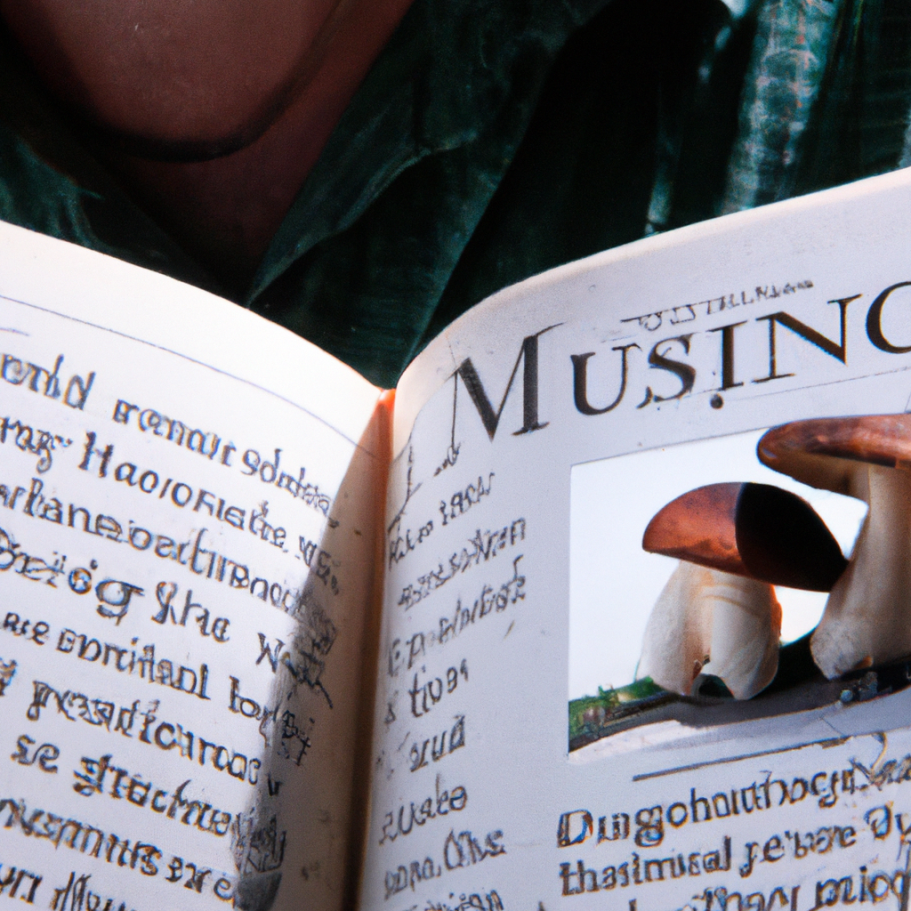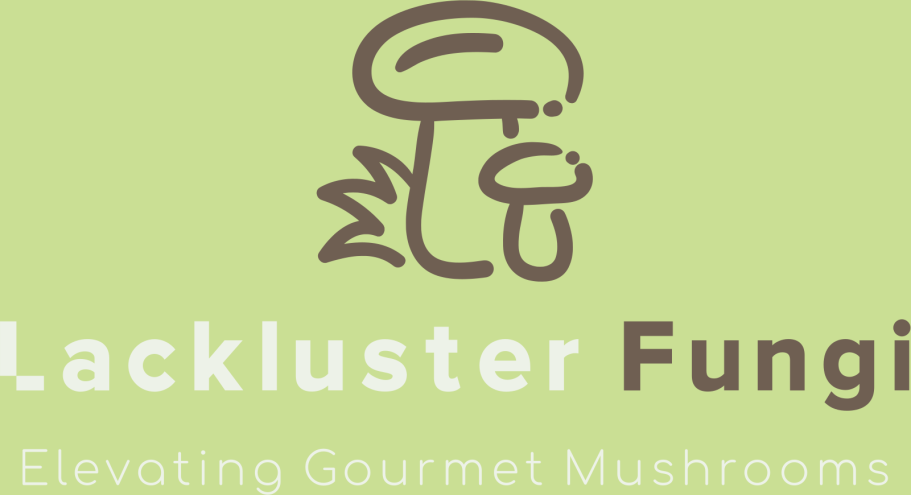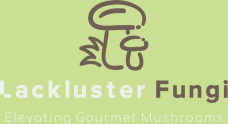Dive into the World of Mycology with LacklusterFungi

Explore Brief Reviews of Fascinating Fungal Reads
Welcome to LacklusterFungi, your dedicated destination for exploring the remarkable realm of fungi through literature. Here, we shine a light on brief yet insightful reviews of books that capture the essence of mycology. Whether you're a seasoned mycologist, an amateur mushroom enthusiast, or simply curious about the hidden life of fungi, our curated selection of reviews will provide you valuable insights and recommendations. Join us as we uncover the captivating stories and scientific wonders that the world of fungi has to offer!

The Fifth Kingdom (Updated Edition) - A Comprehensive and Engaging Resource for Mycology Enthusiasts
If you're a student, researcher, or simply a fungi enthusiast, The Fifth Kingdom by Bryce Kendrick is an essential addition to your bookshelf. The updated edition of this classic mycological text reflects significant advancements in the field of mycology, making it a must-have reference for anyone interested in the fascinating and complex world of fungi.
A New Taxonomic Framework for Fungi
One of the most noteworthy updates in this new edition is the adoption of a new taxonomical framework for fungi, which aligns with the latest research and findings in fungal genetics. This updated framework offers a more comprehensive understanding of fungal classification, providing clarity on evolutionary relationships and the diverse roles fungi play in ecosystems. Kendrick's explanation of this updated system is clear and accessible, making it easy for both beginners and seasoned mycologists to grasp the latest developments.
Fungicides and Mushroom Poisoning: A Revised Approach
The chapter on fungicides has been significantly updated, offering an in-depth look at recent discoveries and how they’re shaping our approach to controlling fungal diseases in agriculture and medicine. With the rise of antifungal resistance, this chapter is timely and incredibly relevant.
In addition, the section on poisonous mushrooms has been expanded to include newly recognized types of mushroom poisoning, with updated treatments and preventive measures. For those who study toxicology or simply enjoy foraging, this updated content is invaluable.
Medical Mycology and Practical Uses of Fungi
The updated edition provides expanded chapters on the medical aspects of mycology. This includes a deeper dive into the therapeutic uses of fungi, such as in the production of antibiotics, immunosuppressants, and other bioactive compounds. Kendrick also explores the practical uses of fungi in various industries, from food production to environmental bioremediation. These topics highlight the growing recognition of fungi as a valuable resource beyond traditional research contexts.
A Visual Feast for Mycology Enthusiasts
As if the content alone weren’t enough to make this book essential, The Fifth Kingdom is also a visual masterpiece. The book is filled with stunning full-color illustrations that bring the complex world of fungi to life. These images are supplemented by access to Kendrick’s extensive online collection of photographs, charts, and other visual resources. Whether you’re a student learning to identify fungal species or a researcher seeking to understand fungal morphology, the visuals make the information more digestible and enjoyable.
Bryce Kendrick’s Unique Style: Clarity, Warmth, and Humor
Kendrick’s writing style is one of the book’s greatest strengths. His characteristic clarity, warmth, and humor make what could be a dry, technical subject thoroughly engaging. He presents complex concepts in an approachable and relatable manner, which helps to demystify mycology and make it accessible to a wide audience. Even the most challenging topics in the field are made understandable without sacrificing scientific rigor.
New Chapters on Mycological Applications
Perhaps the most exciting addition to this edition is the entirely new chapters on the applications of mycological training and its intersection with other fields. These chapters explore how a solid understanding of mycology can be applied in fields ranging from medicine to biotechnology to environmental science. For students looking to carve out a career in mycology or related fields, these new sections offer a fresh perspective and practical guidance.
Conclusion
In summary, the updated edition of The Fifth Kingdom is not just a textbook—it’s a comprehensive, visually stunning, and thoroughly engaging resource that will captivate mycology students, researchers, and hobbyists alike. Whether you're delving into the latest research on fungal taxonomy or simply curious about the practical applications of fungi in modern science, this book provides invaluable insights into the exciting world of fungi. Kendrick’s engaging writing, combined with the depth of information and beautiful visuals, makes this book an essential reference for anyone passionate about the fungal kingdom.

Radical Mycology by Peter McCoy - A Groundbreaking Exploration of Fungi's Potential
Peter McCoy’s Radical Mycology offers a bold and transformative look at the diverse world of fungi, not only through the lens of science but also as a catalyst for social change, ecological restoration, and sustainable living. This book is far more than just a guide to mycology; it is a call to action, urging readers to explore how fungi can be used as tools for personal empowerment, community building, and ecological healing.
A Holistic Approach to Mycology
Radical Mycology stands out because of its unique, holistic approach to the study of fungi. McCoy presents mycology not just as a scientific discipline but as a gateway to deeper ecological understanding and practical solutions to the pressing issues of our time. He encourages readers to see fungi as powerful agents for social transformation and environmental stewardship, blending traditional mycology with radical ideas for a sustainable future.
The book is divided into practical, easy-to-follow chapters that address both the scientific and activist sides of mycology. Whether you're an experienced mycologist or a complete beginner, McCoy's engaging writing style ensures that each topic is accessible without sacrificing depth.
Fungi as Ecological Heroes
One of the most compelling sections of Radical Mycology focuses on fungi’s potential in ecological restoration. McCoy explores the many ways fungi can be used to combat environmental degradation, from bioremediation (using fungi to break down pollutants) to mycoforestry (leveraging fungi in forest management and ecosystem regeneration). The book delves into the incredible power of mycorrhizal networks to enhance soil health and plant growth, demonstrating how fungi can play a pivotal role in restoring degraded ecosystems.
The focus on fungal applications in environmental recovery reflects the book’s larger theme: fungi are not just organisms to be studied, but powerful partners in our efforts to restore balance to the planet. McCoy’s optimism is infectious, making this section of the book feel like an inspiring manifesto for those who care about ecological activism.
Radical Mycology and Social Change
True to its name, Radical Mycology also highlights how fungi can be integrated into broader social and political movements. McCoy emphasizes that fungi are not just a scientific curiosity, but part of a larger cultural shift towards self-sufficiency, sustainability, and community-based solutions. The book encourages readers to engage with fungi in creative ways—whether through foraging, cultivation, or experimentation—and to consider how mycology can be a tool for empowerment in marginalized communities.
This aspect of Radical Mycology is refreshing, as it reframes fungi as not just a biological resource but a symbol of resilience, decentralization, and community. McCoy discusses the importance of open-source knowledge in mycology, advocating for a more collective, accessible approach to mycological education that aligns with radical social movements.
Practical Guides and Techniques
In addition to its philosophical and ecological depth, Radical Mycology is a practical manual for anyone interested in cultivating fungi. McCoy provides detailed instructions on how to grow various types of mushrooms, from edible species to medicinal and psychedelic varieties. The book also includes guidance on making your own myco-remediation projects, cultivating mycelium for soil health, and creating fungal-based products like mushroom leather and myco-fabric.
The practical aspect of the book is especially useful for hands-on readers who want to integrate the principles of radical mycology into their daily lives. Whether you’re interested in cultivating mushrooms for food, creating a permaculture garden, or experimenting with fungi in innovative ways, McCoy’s instructions are clear and achievable, making the book a valuable resource for DIY enthusiasts.
A Visual and Educational Journey
While Radical Mycology may not have the same lavish illustrations as some more traditional mycology texts, it compensates with a wealth of diagrams, charts, and photographs that aid in understanding key concepts. These visuals support the educational value of the book, breaking down complex ideas into digestible pieces. The book also includes practical tips on foraging, identifying, and cultivating various types of fungi, making it an interactive guide to exploring the fungal world.
McCoy’s accessible writing style ensures that even beginners can dive into the material without feeling overwhelmed, while more advanced readers will appreciate the depth of knowledge and practical techniques shared throughout the text.
The Spirit of Radical Mycology – Empowerment Through Fungi
At its core, Radical Mycology is a celebration of fungi’s potential to transform our world. McCoy encourages readers to move beyond seeing fungi as simply food or medicine, urging us to view them as allies in the fight against environmental destruction and social inequity. The book’s radical, integrative approach offers a vision of mycology that is deeply connected to environmental activism, self-sufficiency, and community-building.
In many ways, Radical Mycology is a blueprint for how fungi can be used to address some of the most urgent challenges of our time. McCoy’s passion for the subject is evident in every page, and his enthusiasm for fungi’s potential to create positive change is contagious.
Conclusion
Radical Mycology is more than just a book about fungi—it’s a manifesto for those who want to see fungi as powerful tools for ecological restoration, personal empowerment, and social transformation. With its blend of science, activism, and practical knowledge, it offers a unique perspective that is both inspiring and educational. Whether you’re a mycology expert, a sustainability enthusiast, or someone simply curious about the world of fungi, Radical Mycology provides a deep, radical, and hands-on approach to understanding and engaging with the fungal kingdom.
McCoy’s vision of fungi as agents of change is both timely and thought-provoking, making this book a must-read for anyone interested in the intersection of science, sustainability, and social justice.

Introductory Mycology by Alexopoulos, Mims, and Blackwell -A Comprehensive Foundation in Mycology
Introductory Mycology by Alexopoulos, Mims, and Blackwell is widely regarded as one of the definitive textbooks for students and professionals seeking a deep, yet accessible, understanding of fungi. Now in its revised edition, the book continues to serve as a cornerstone reference in the field of mycology, providing readers with a comprehensive and systematic introduction to the biology, ecology, and practical applications of fungi. With its balanced coverage of both basic concepts and advanced topics, Introductory Mycology is ideal for those embarking on their mycological studies as well as those looking to expand their knowledge base.
A Thorough Overview of Fungal Biology
One of the standout features of Introductory Mycology is its systematic approach to mycological biology. The book begins with the fundamental principles of mycology, including the classification, morphology, and physiology of fungi. This solid foundation makes it an excellent choice for students who are new to the field, offering clear explanations of complex concepts like fungal reproduction, nutrition, and growth patterns. The text carefully explains the cellular and molecular structures of fungi, setting the stage for more advanced topics in fungal physiology and biochemistry.
The authors take great care in explaining the diverse forms and life cycles of fungi. From yeasts and molds to mushrooms and lichens, the book offers detailed insights into fungal anatomy, spore formation, and the various strategies fungi use to survive and reproduce. The authors’ approach is methodical and easy to follow, making even the most intricate topics digestible for readers at all levels.
In-Depth Coverage of Fungal Taxonomy
A major strength of Introductory Mycology is its thorough treatment of fungal taxonomy. The book explores the vast diversity of fungal species, providing an in-depth look at their classification within the broader context of the biological kingdom. The text covers traditional classification schemes as well as newer molecular-based systems, offering a comprehensive view of the fungal tree of life. This makes the book an invaluable resource for anyone wanting to understand how fungi are classified and how their evolutionary relationships are being redefined by modern techniques like DNA sequencing.
The taxonomic discussions are complemented by clear diagrams and illustrations that help readers visualize the different fungal groups, including ascomycetes, basidiomycetes, zygomycetes, and chytridiomycetes. The detailed descriptions of each group include their ecological roles, reproductive methods, and significance to human life, providing a well-rounded understanding of the fungal kingdom’s diversity.
Ecological and Practical Aspects of Mycology
Introductory Mycology does not limit itself to theoretical aspects; it also gives substantial attention to the ecological roles fungi play in the environment. The book explores the critical functions of fungi in nutrient cycling, plant symbioses, and their impact on ecosystems. In addition, it addresses fungi's role in biotechnology, including their use in food production, pharmaceuticals, and bioremediation. The text carefully details the ways fungi contribute to the environment and human industry, making it clear that fungi are not just organisms to study in a lab, but also vital components of ecological health and sustainability.
The authors take great care to explain the practical uses of fungi, from industrial applications like fermentation to their importance in medicine (e.g., antibiotic production) and agriculture (e.g., as biofungicides and mycofertilizers). This section highlights the ongoing relevance of fungi in a range of fields, providing readers with a sense of the vast and varied ways in which fungi intersect with human life.
Health, Disease, and Medical Mycology
Medical mycology receives dedicated attention in Introductory Mycology, with the authors covering both the beneficial uses of fungi in medicine (e.g., antibiotics and immunosuppressants) as well as the pathogenic fungi that cause diseases in humans, plants, and animals. The discussion of fungal infections, including diseases caused by Candida, Aspergillus, and Cryptococcus, is well-researched and clinically relevant, providing a solid foundation for anyone interested in the medical aspects of mycology. This section is especially valuable for students in medical or health-related fields.
The book also discusses the mechanisms behind fungal virulence, pathogenicity, and antifungal resistance, providing an important overview of the emerging challenges in the treatment of fungal diseases. These topics are presented with clarity, making the material accessible to a wide audience, from medical students to researchers in microbiology and infectious diseases.
Clarity, Structure, and Pedagogical Excellence
What truly sets Introductory Mycology apart from other mycology texts is its pedagogical structure. The book is organized in a way that builds upon foundational knowledge and gradually introduces more complex ideas. Each chapter begins with clear learning objectives, followed by well-structured explanations, illustrations, and charts that reinforce key points. The content is supplemented with study questions and review sections that help reinforce the material and encourage active learning.
The inclusion of practical examples, case studies, and historical perspectives also enriches the learning experience. For instance, the book features notable mycologists and important breakthroughs in mycology, which helps readers appreciate the evolution of the field and the contributions of scientists who have shaped our understanding of fungi.
Illustrations and Visual Resources
Introductory Mycology is generously illustrated with high-quality images, diagrams, and photographs, which are invaluable for visual learners. These visuals help clarify complex structures, such as fungal hyphae, fruiting bodies, and spore morphology, as well as providing a clear visual distinction between different fungal taxa. The illustrations also enhance understanding of fungal life cycles, ecological interactions, and the physical processes behind fungal growth.
Conclusion
Introductory Mycology by Alexopoulos, Mims, and Blackwell remains one of the most comprehensive and accessible textbooks on fungi available today. It offers a well-rounded exploration of fungal biology, taxonomy, ecology, and practical applications, making it an indispensable resource for students, researchers, and anyone interested in the fascinating world of fungi. The authors’ clear writing, logical structure, and engaging presentation of material make the book an ideal choice for those new to mycology, while its depth and breadth ensure it remains a valuable reference for more advanced learners.
With its combination of scientific rigor and educational clarity, Introductory Mycology provides an exceptional foundation in mycology that will serve as a critical resource throughout one’s academic and professional career. Whether you're a biology student starting your studies or a researcher looking to deepen your understanding of fungal biology, this textbook is a must-have reference that will guide and inspire your journey into the world of fungi.
We need your consent to load the translations
We use a third-party service to translate the website content that may collect data about your activity. Please review the details in the privacy policy and accept the service to view the translations.

